3D Shapes Teaching Resources
Teach 3D shapes to your primary students with ease using printable worksheets, instructional posters, digital teaching tools, hands-on games and much more from Teach Starter’s extensive collection of three-dimensional shape resources!
This collection of curriculum-aligned teaching resources has been created by Teach Starter’s passionate team of primary teachers to make planning easier for teachers just like you! Familiarise students with 3D shapes and their properties using this extensive range of practical, hands-on, easy-to-implement teaching and learning materials. Designed to cater to a range of ability levels, our differentiated and editable activities are bound to excite your students as they engage with the important mathematical topic.
Need a refresher on 3D shapes before delving into this concept with your students? Read on for a guide to all things three-dimensional from our experienced teacher team, including features of 3D shapes, examples of these objects and more!
What Are 3D Shapes? A Kid-Friendly Definition
Looking for a simple way to describe 3D shapes (referred to as 3D objects in the Australian curriculum) to your students?
These are shapes that have three dimensions: length, width and depth. They differ from 2D shapes, which only have two dimensions (length and width). The other key difference between two-dimensional shapes and three-dimensional objects is that 3D objects have volume. Volume refers to the amount of space inside the 3D object.
What Are the Properties of 3D Shapes?
In addition to learning the correct mathematical names of the 3D shapes they are familiar with (more on that later!), students in primary school are taught that these objects have specific properties. The properties of three-dimensional objects are their faces, edges and vertices. The number of faces, edges and vertices varies from one 3D shape to another.
Faces
A face on a three-dimensional shape is any flat surface on the outside of the object with straight edges. The square base on a square-based pyramid is an example of a face.
Edges
An edge refers to the straight line that is formed when two faces of a 3D shape meet. Using the previous example of the square-based pyramid, this 3D shape has four edges around the base. These edges occur where the square face at the bottom of the pyramid meets the triangular faces that make up the sides of the pyramid.
Vertices
A vertex on a 3D shape is any point where two edges meet. Another word commonly used as a synonym for vertice is ‘corner.’ Returning to our square-based pyramid, this 3D shape has four vertices at the base, and one at the very top where the edges of the four triangular faces meet.
What Are Some Examples of 3D Shapes?
Most primary students are familiar with the overarching concept of a 3D shape. After all, these objects are to be found everywhere in our immediate environments! Think of household items such as books, cans of drink, boxes of food, balls and so on. But do they know the mathematical names of these familiar objects? Some students may, but the vast majority probably don't!
That is why teachers must explicitly teach the mathematical names of these familiar objects.
Here are some of the more common 3D shapes that your students will encounter during their primary school education.
Sphere
A sphere is a ball-shaped 3D object that is perfectly symmetrical. A sphere has one curved surface and unlike many other 3D objects, it has no faces, edges or vertices.

Prisms
Prisms are 3D objects that have the same 2D shape at each end. The sides that connect these end faces together are rectangular. Prisms are named after their cross-section. The cross-section of a prism is the shape that is made by cutting vertically down through the object. For example, a prism with a triangular cross-section is called a triangular prism.
Pyramids
Pyramids are 3D objects with triangular sides that meet together at the top (called the apex). The base of a pyramid can be any 2D shape, and this shape gives the pyramid its name. For example, a pyramid with a hexagon as its base is called a hexagonal pyramid.
Cone
Don't be fooled... a cone may look a little like a pyramid, but it is a 3D object in its own right! A cone has a circular base and one curved surface that tapers to a single point (the apex). The apex sits directly above the centre of the base circle.
Cylinder
A cylinder is a 3D object similar to a can of soft drink. It has two identical ends which are circular in shape. One curved surface joins the two circular ends together.
What Are 3D Shape Nets?
One highly effective way of teaching your students about the properties of 3D shapes is to have your students construct their own 3D models using nets. These nets are essentially a flattened-out version of a 3D shape that can be cut out, folded and adhered together to create a model of that particular 3D shape.
Best of all, 3D nets are great teaching tools to help students understand the properties of these shapes, as they can see and count the faces, edges and vertices with greater ease and accuracy. Students also love decorating their nets with bright and vibrant designs … and you can make some very cool creations with them, too!

Do 3D Shapes Have Lines of Symmetry?
Good question! When exploring two-dimensional shapes, students are taught about lines of symmetry: imaginary lines that divide a shape into two equal halves that are an exact reflection of each other. When exploring 3D objects, it seems natural that the concept of symmetry may crop up!
Unlike their two-dimensional counterparts, three-dimensional objects do not have lines of symmetry. It is important for students to understand that because they have depth (as well as length and width), three-dimensional objects cannot be made symmetrical using a single line. It takes multiple lines that form a 2D shape to create what is called a ‘plane of symmetry’ within a 3D object.
- Plus Plan
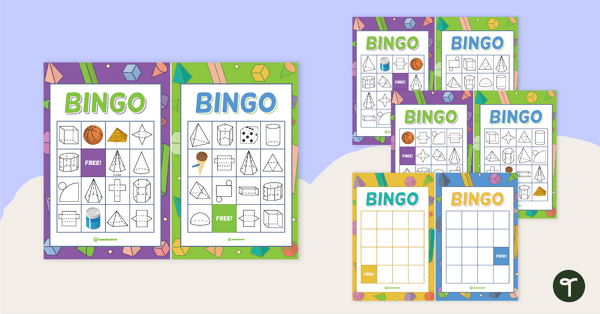
3D Object Bingo
Learn the names of the most common 3D objects with this whole-class Bingo game.
- Plus Plan

3D Objects Dominoes
Help your students learn the names of the most common three-dimensional objects with this set of dominoes.
- Plus Plan
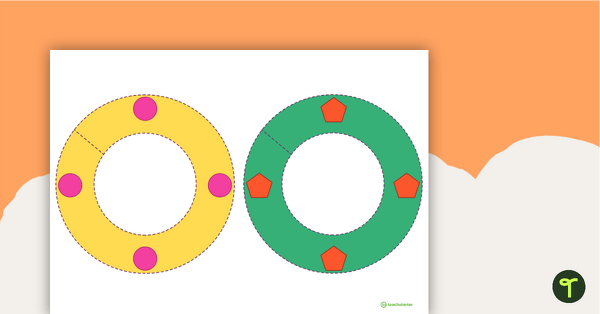
Learn and Play Spots - 2D Shapes and 3D Objects
Carpet rings perfect for velcro carpet dots, focusing on 2D shapes and 3D objects.
- Plus Plan
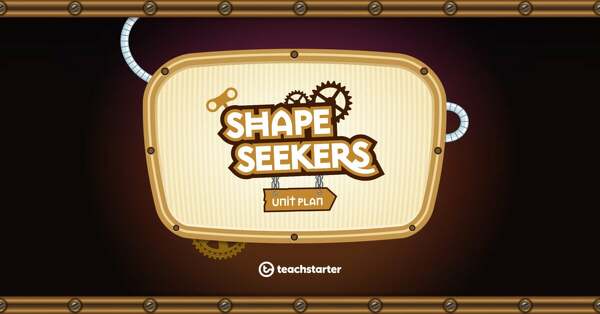
Shape Seekers
This Mathematics unit helps students describe the features and make models of 3D objects.
- Plus Plan
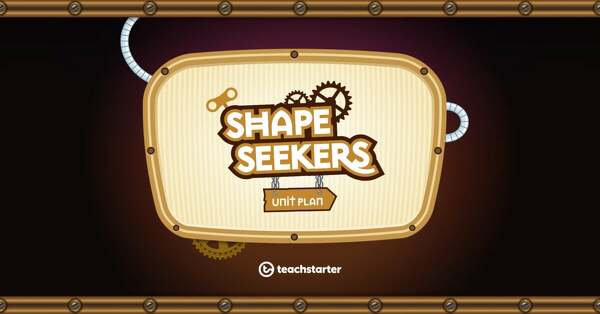
Assessment – 3D Object Profiles
An assessment task designed for students to demonstrate their ability to make 3D object models and describe their features.
- Plus Plan
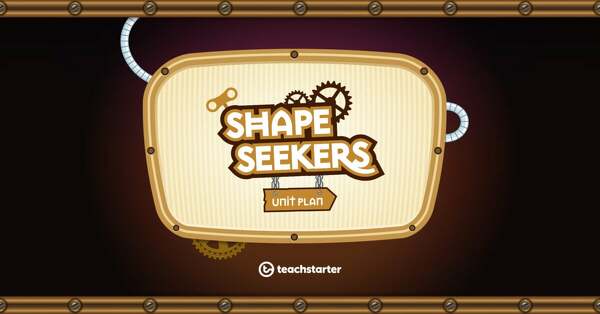
Polyhedrons and Pals
- Plus Plan
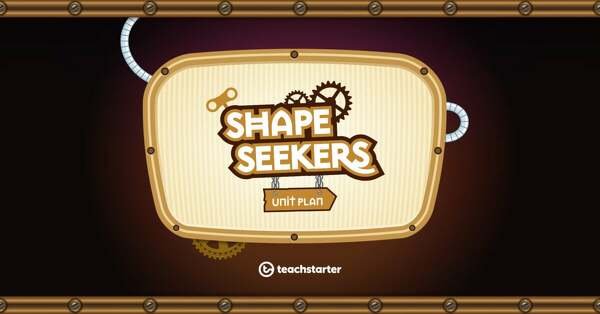
The Problematic Pyramids
- Plus Plan

The Prism Predicament
- Plus Plan
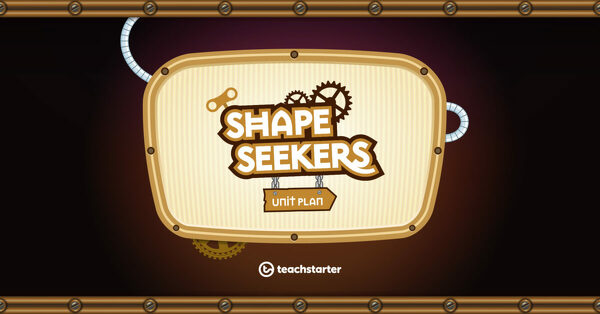
2D or Not 2D?
-
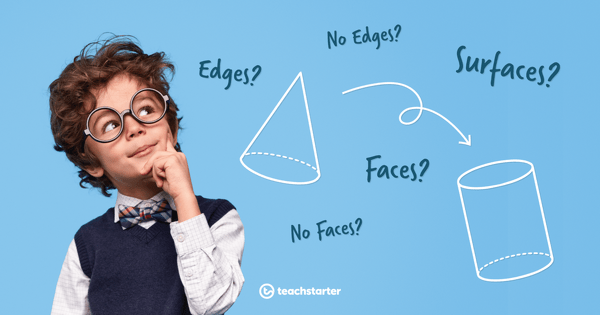
The Cone and Cylinder Debate!
Do cones and cylinders have edges and faces? The debate is cleared up in this blog.